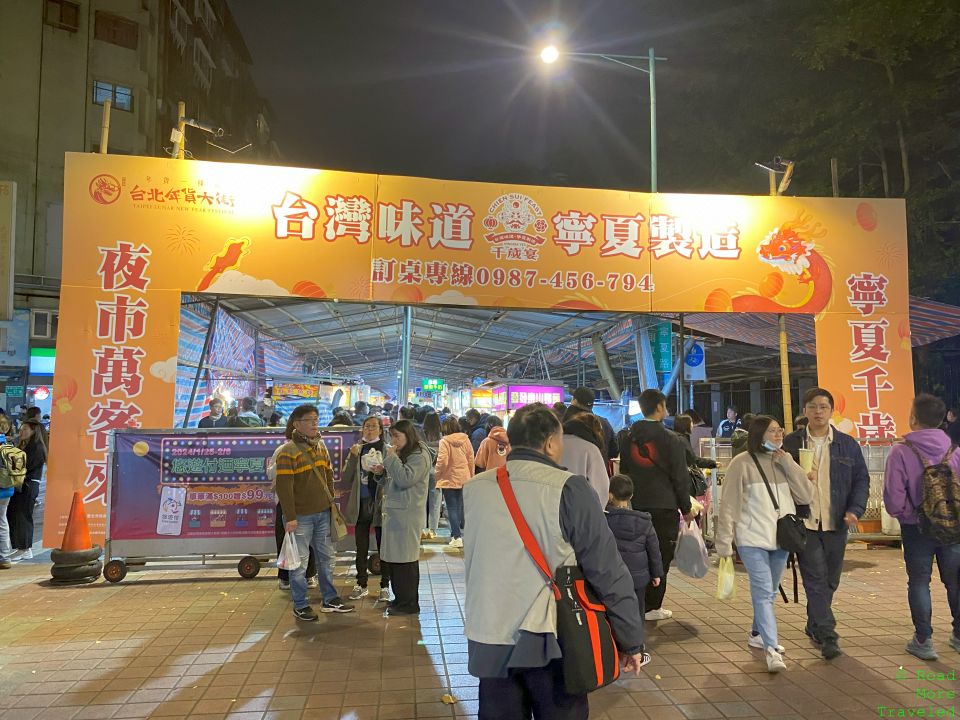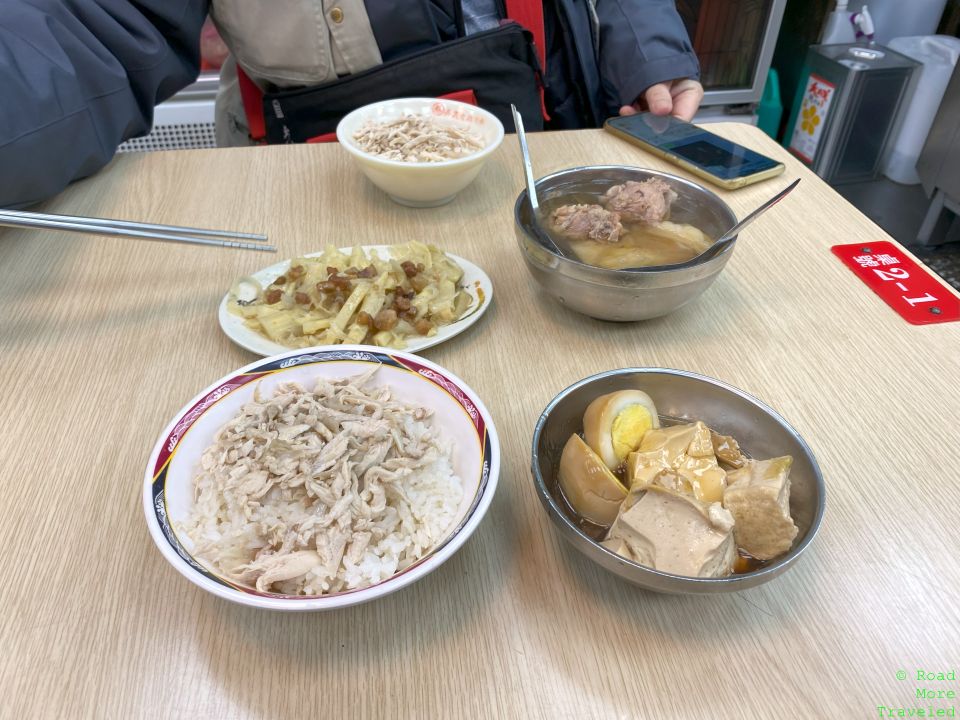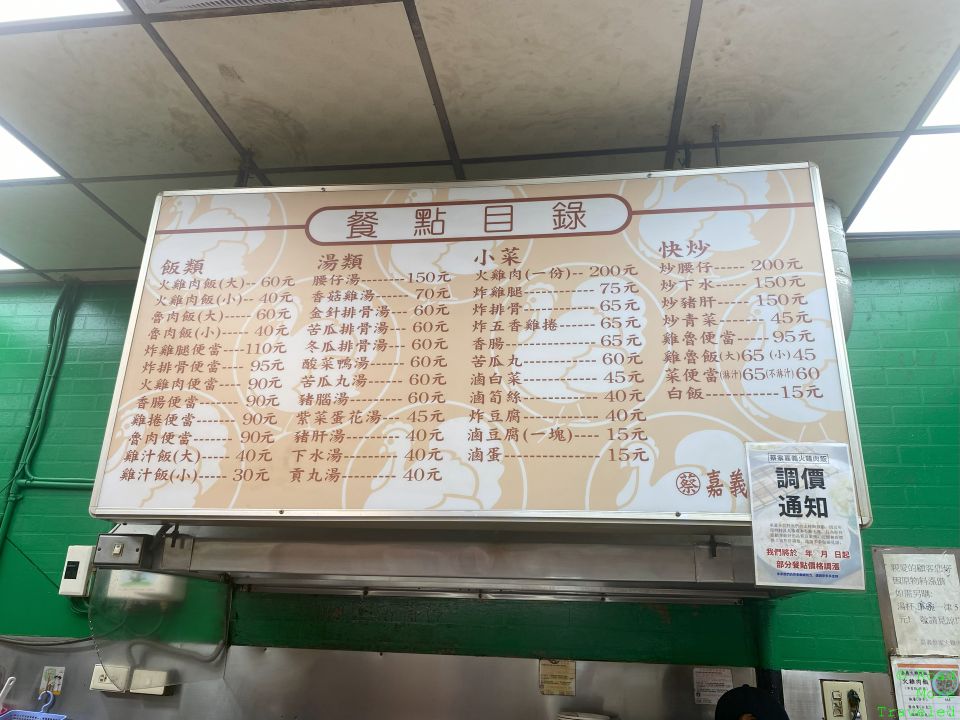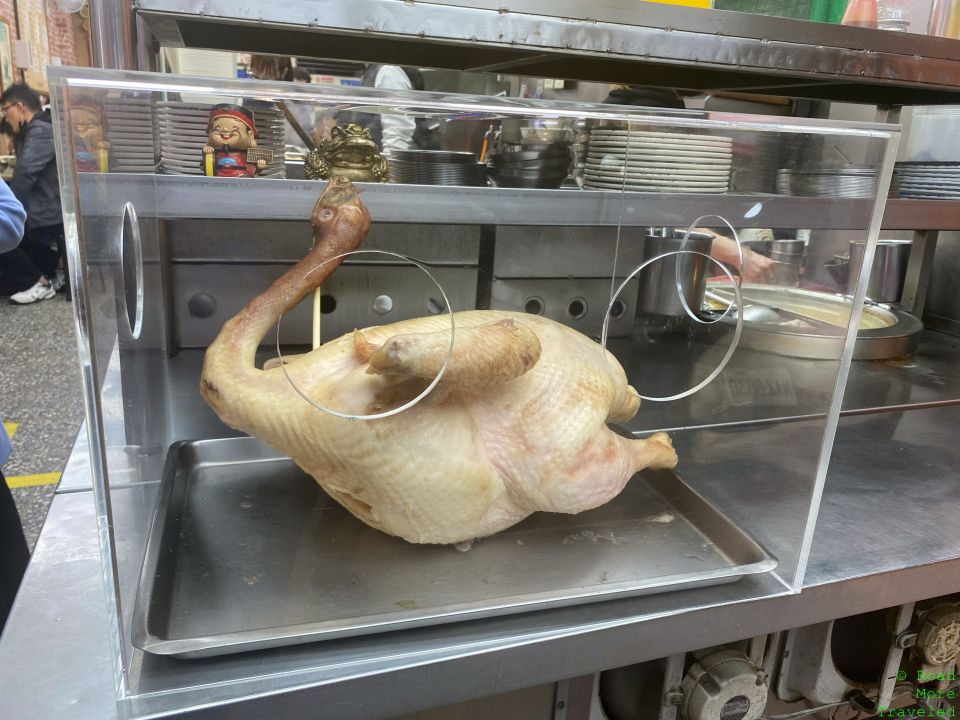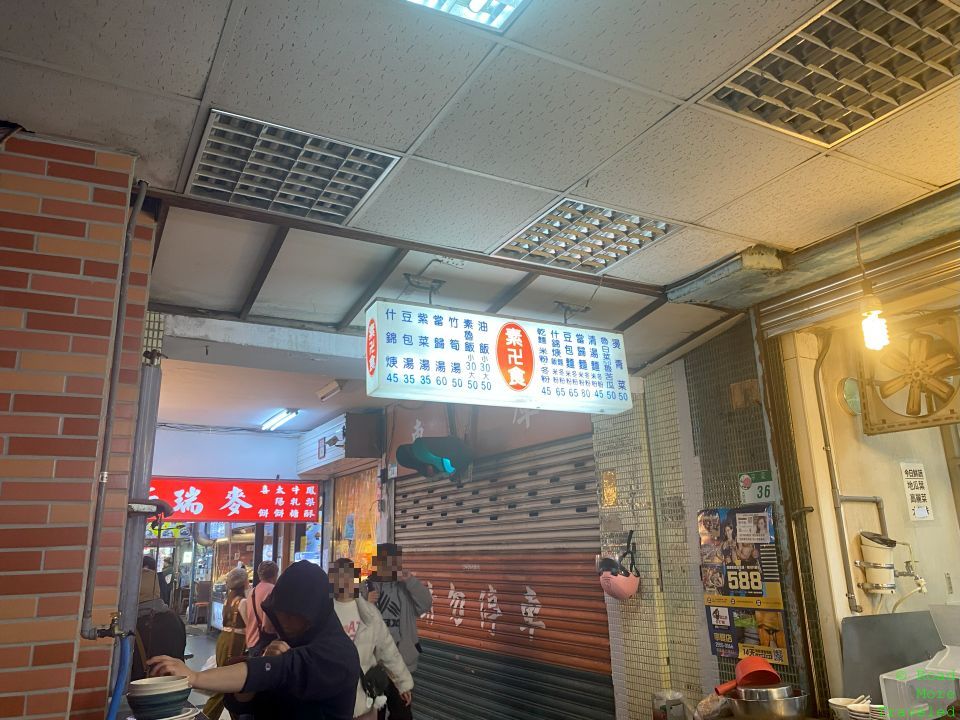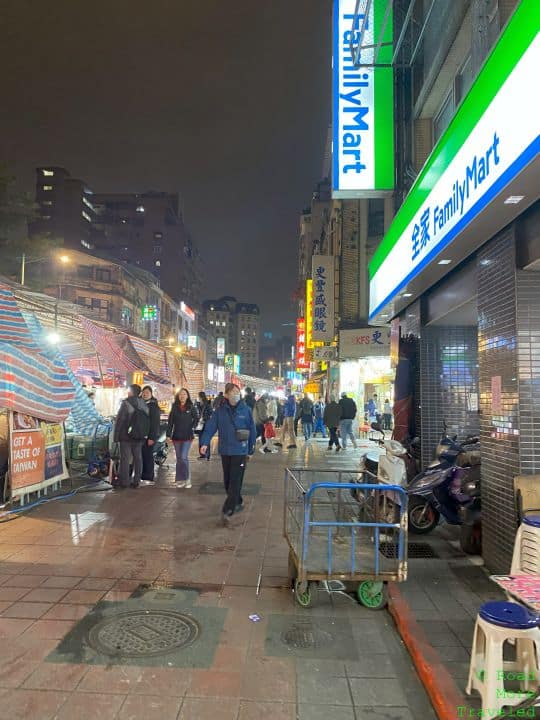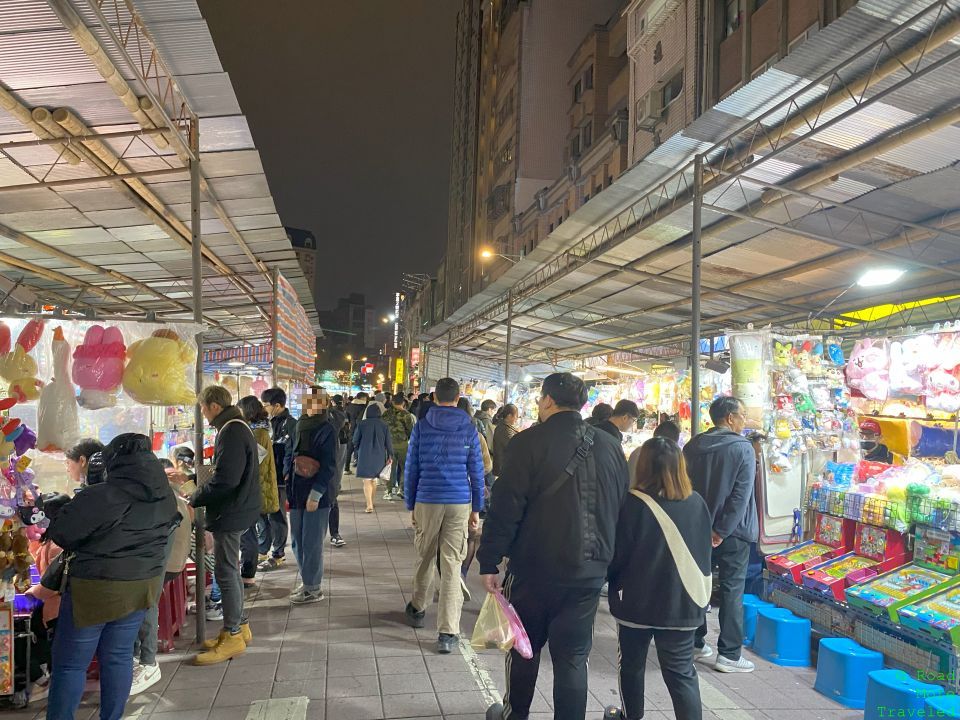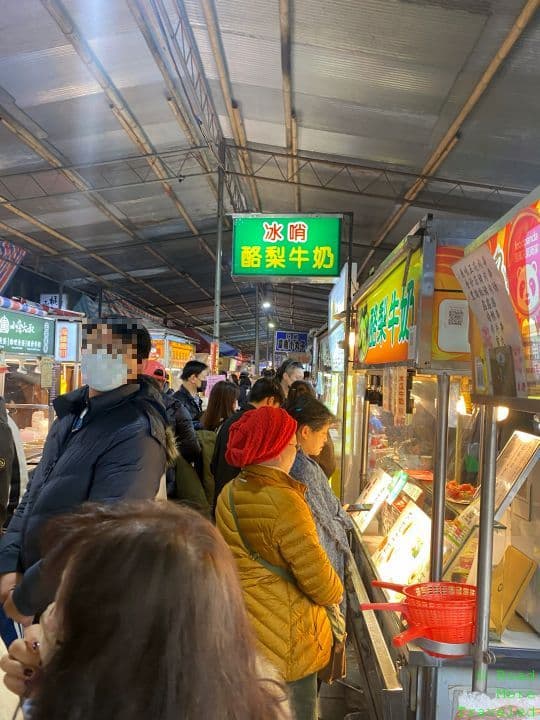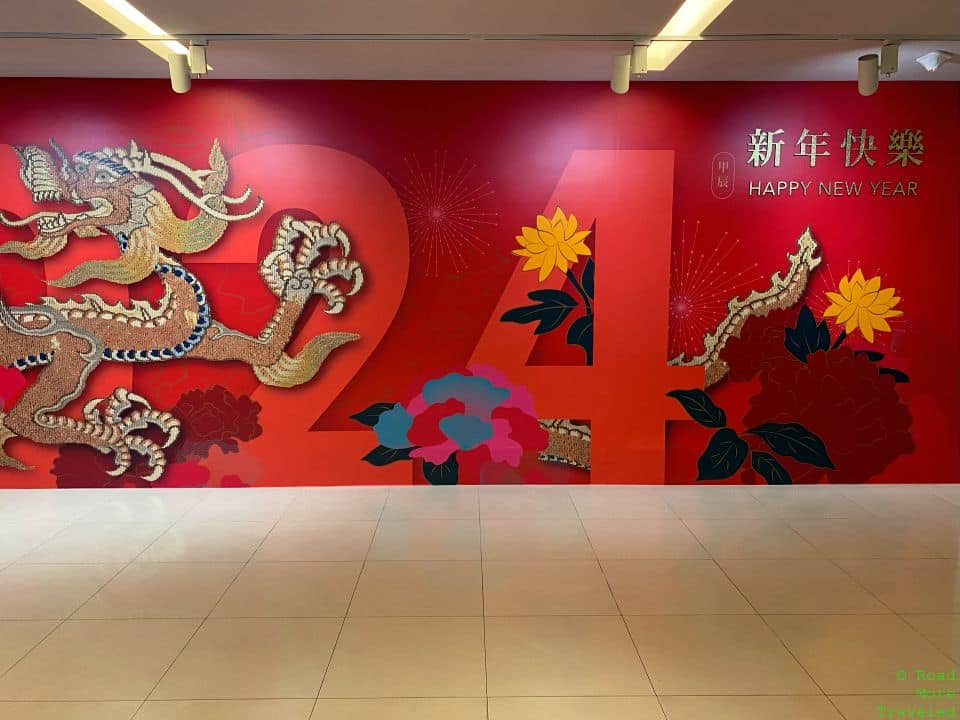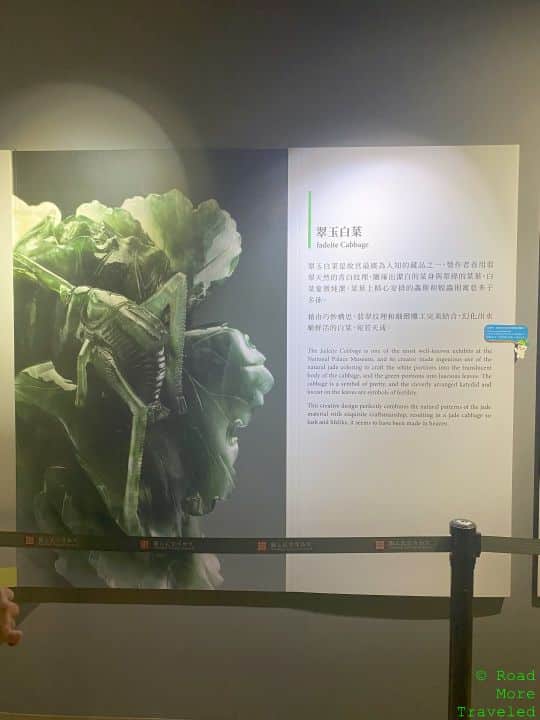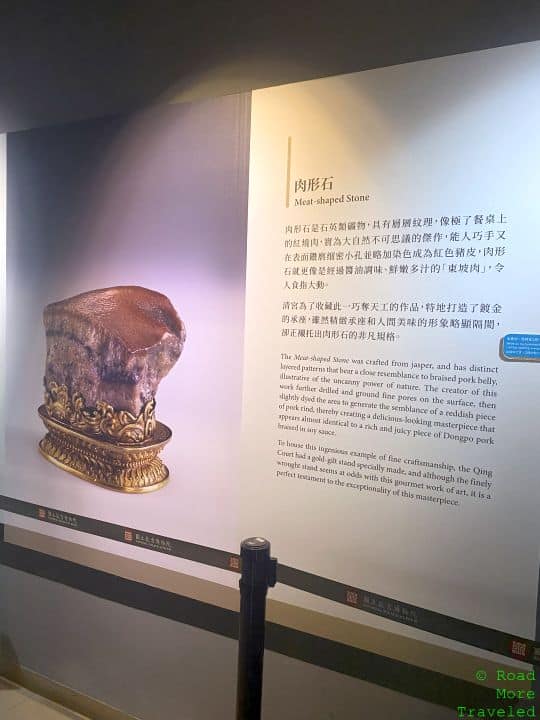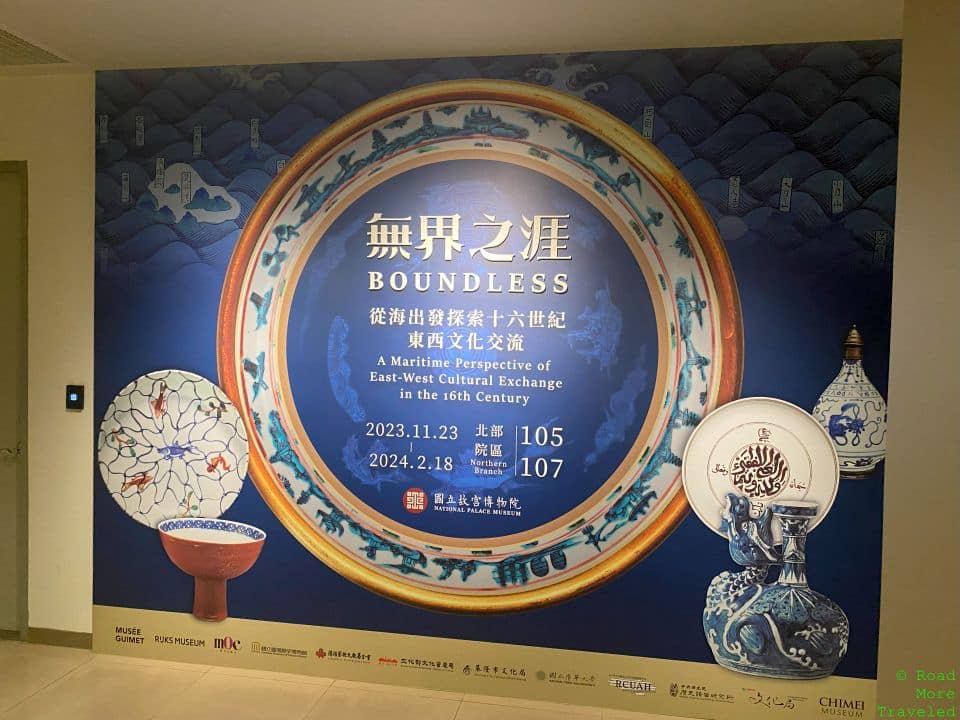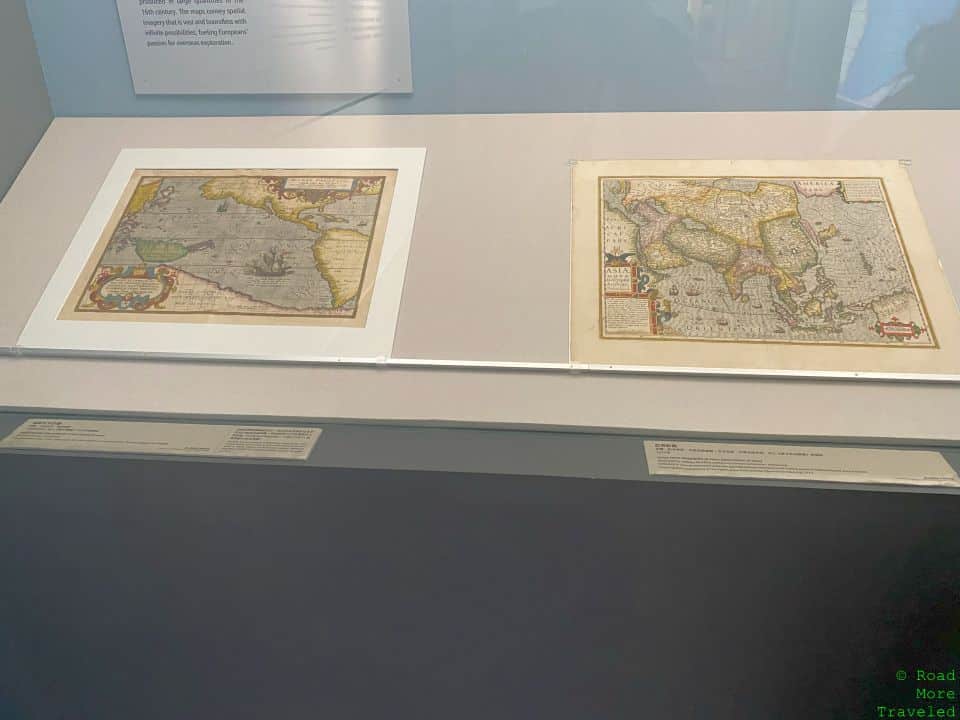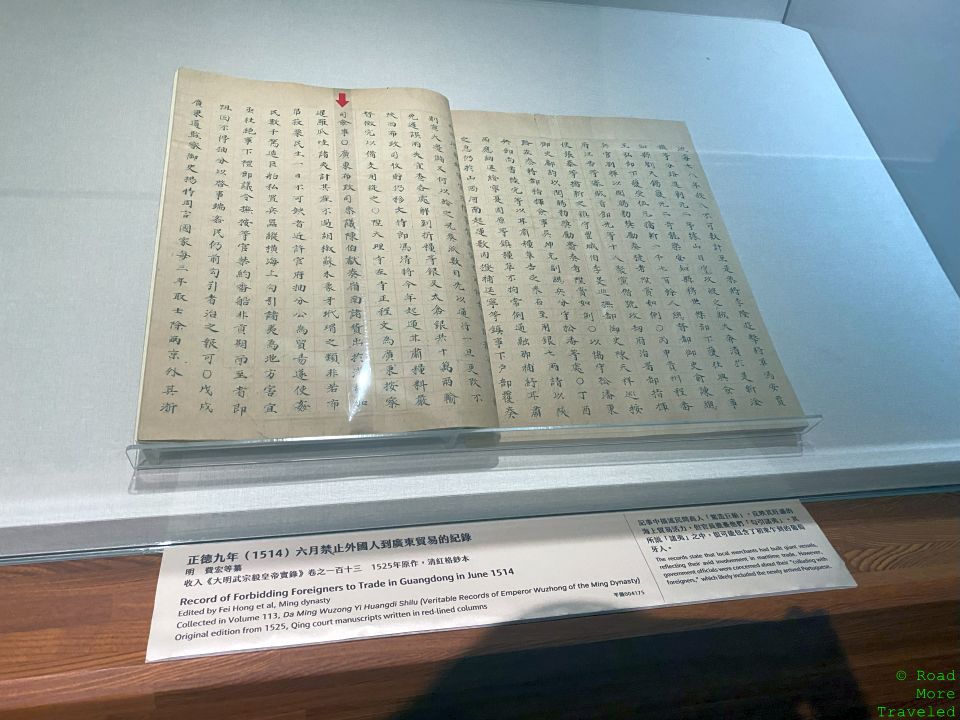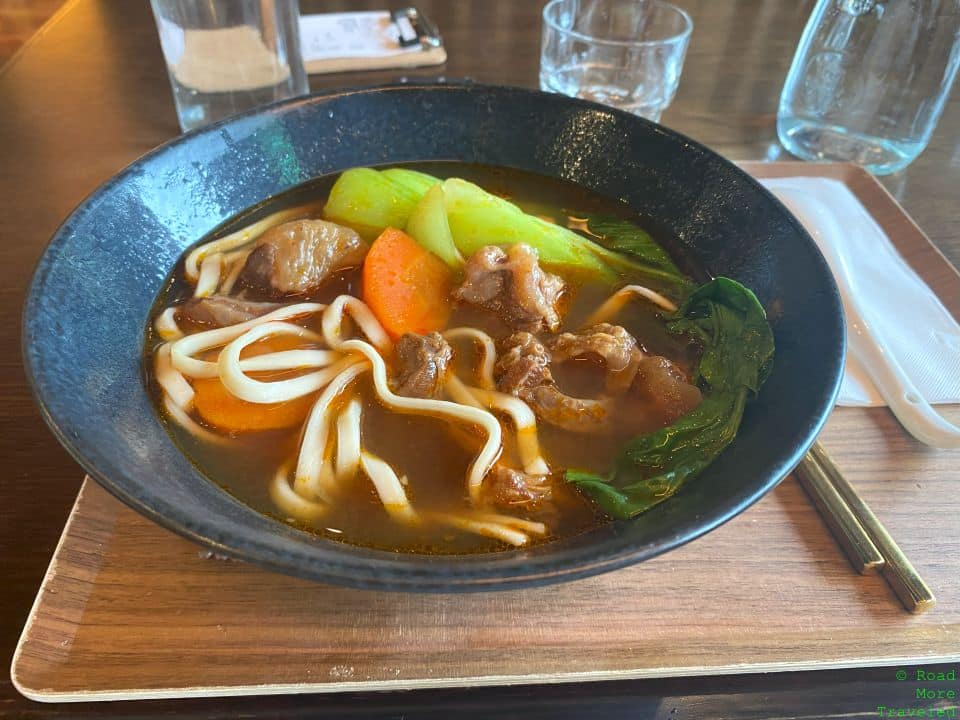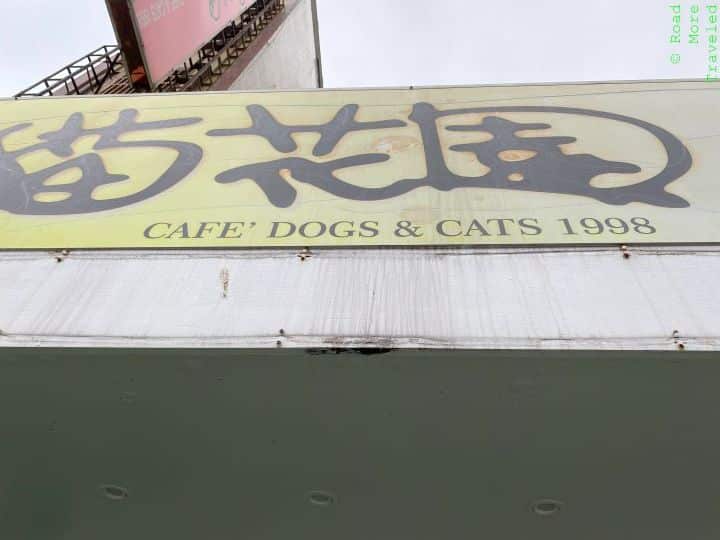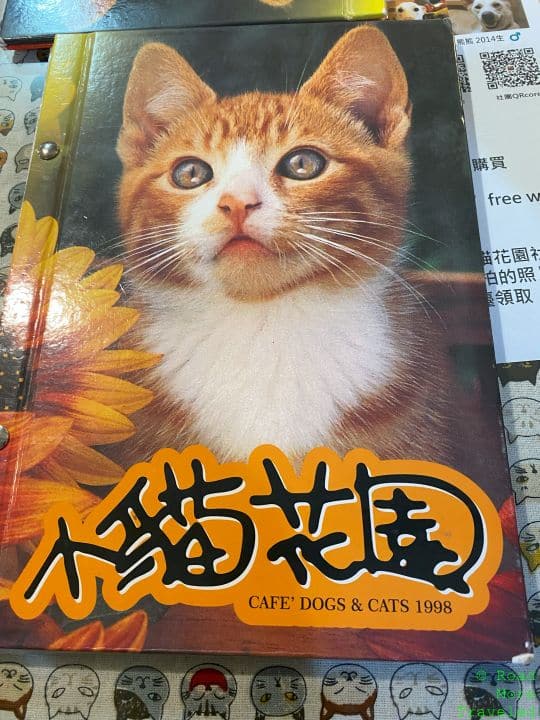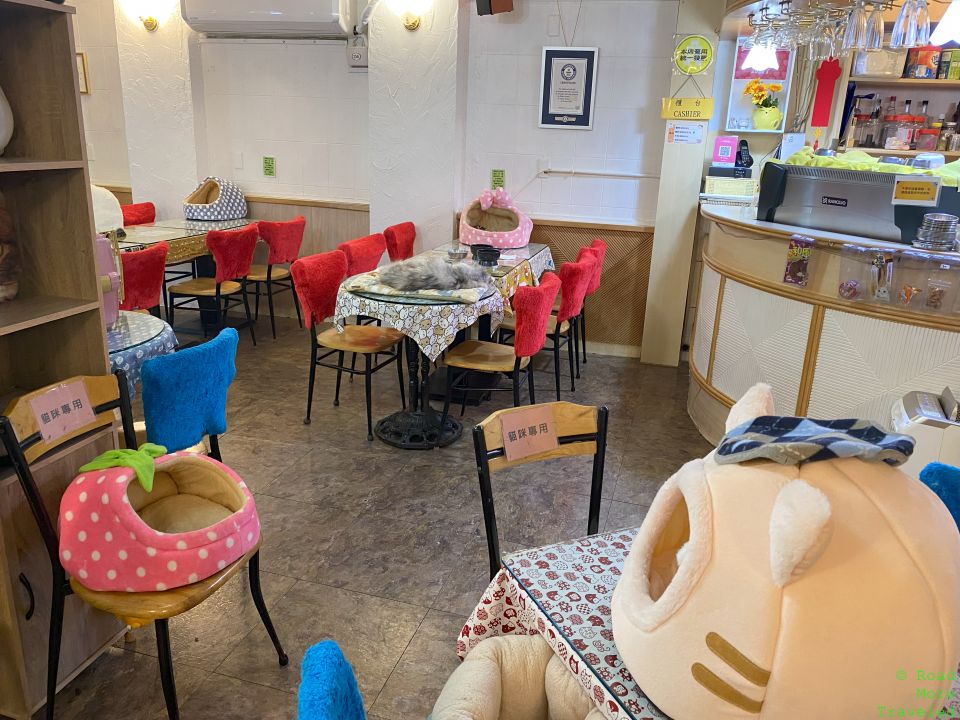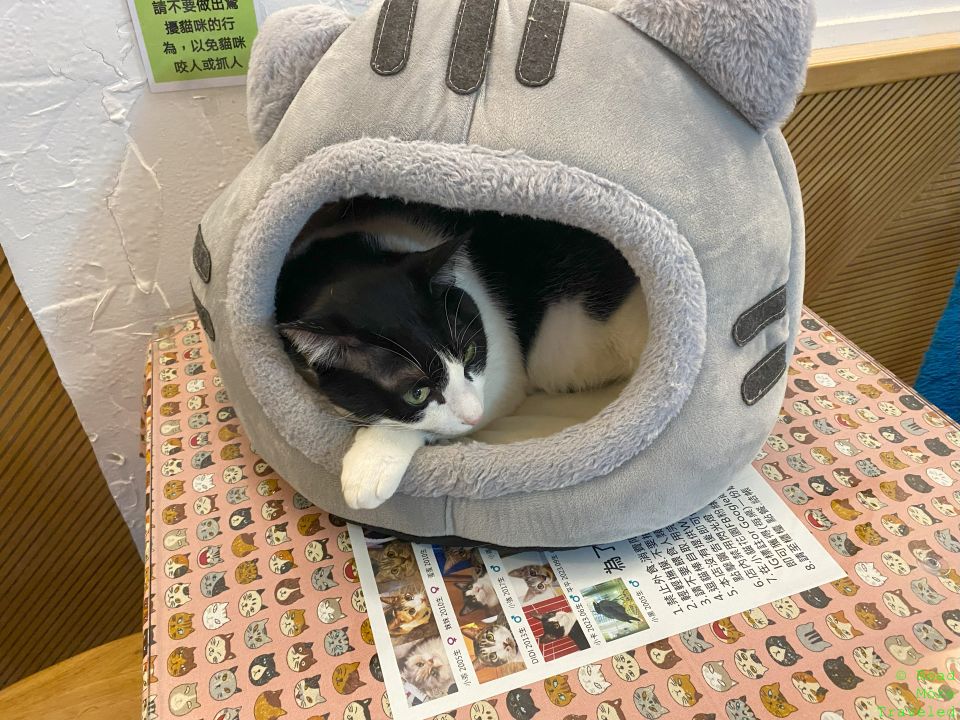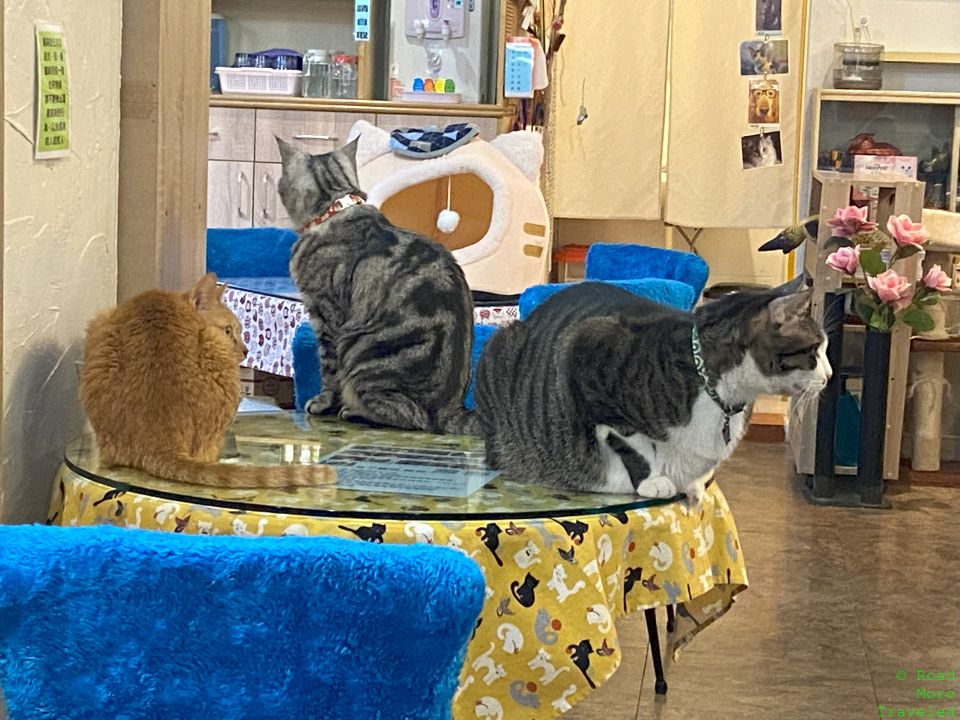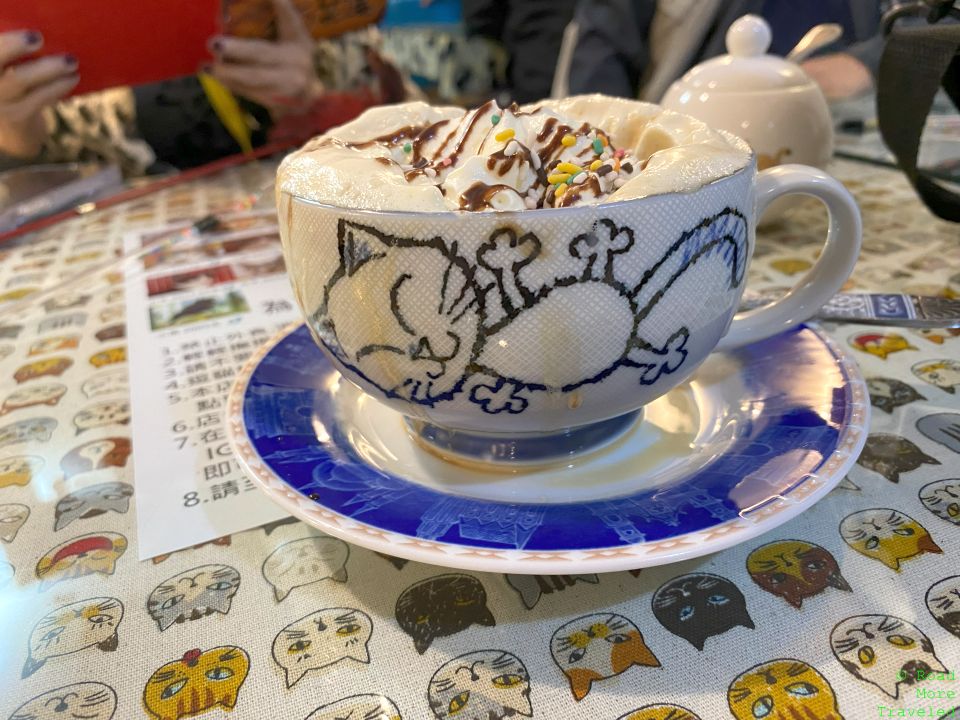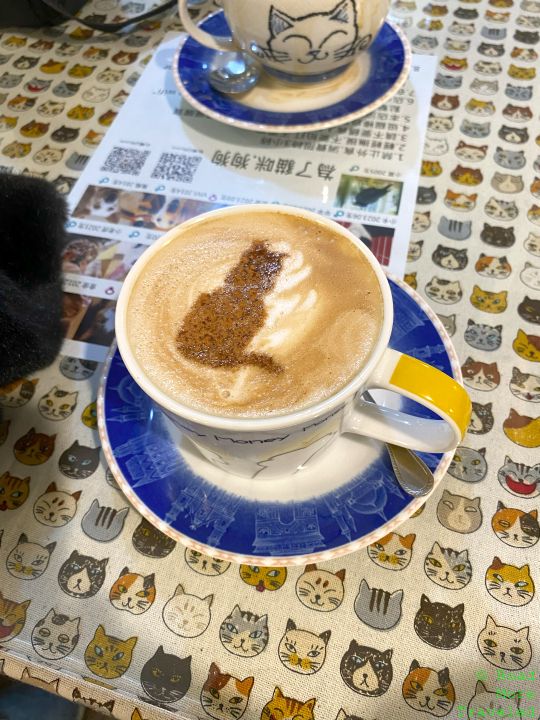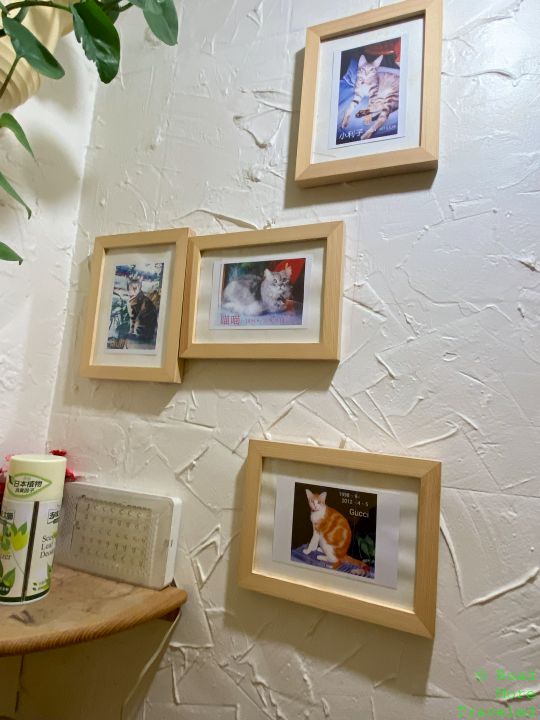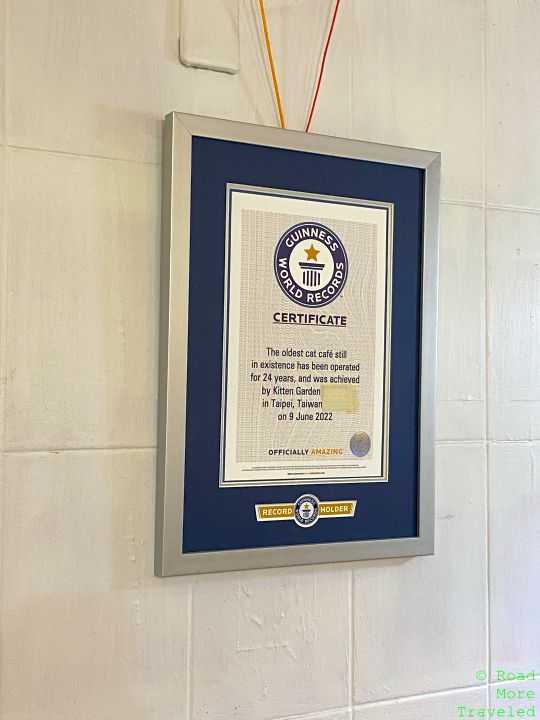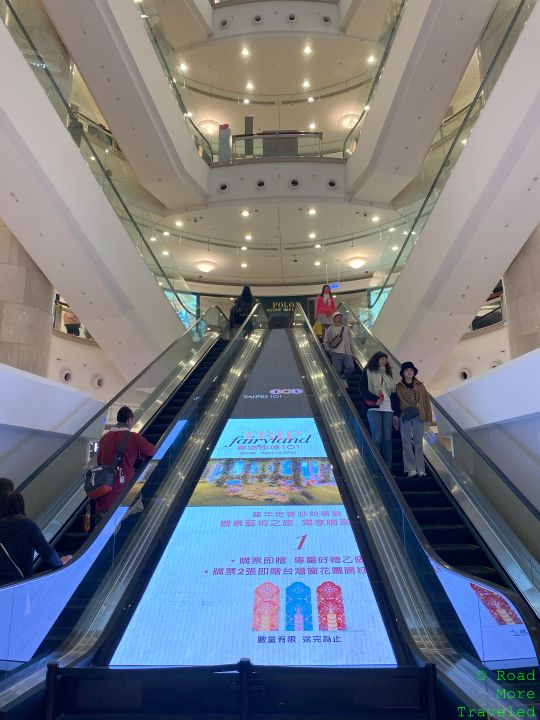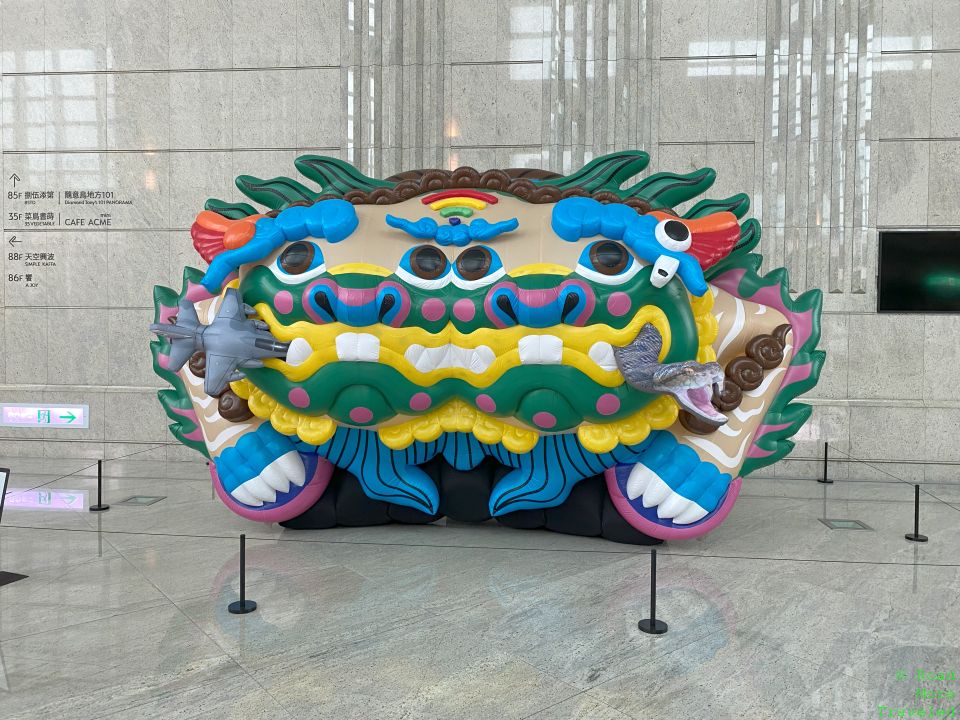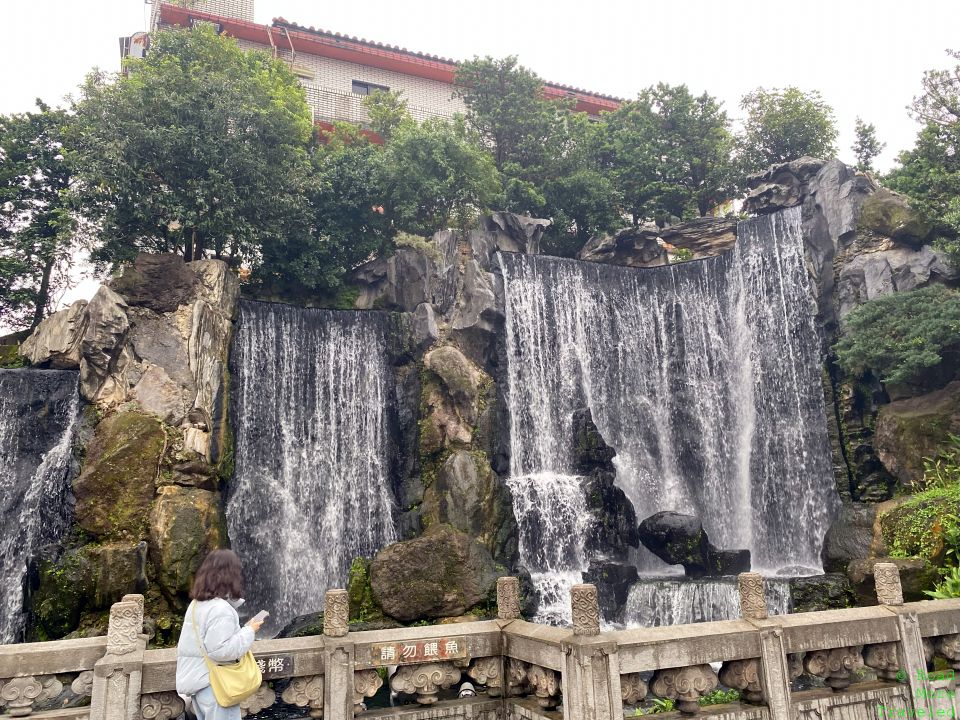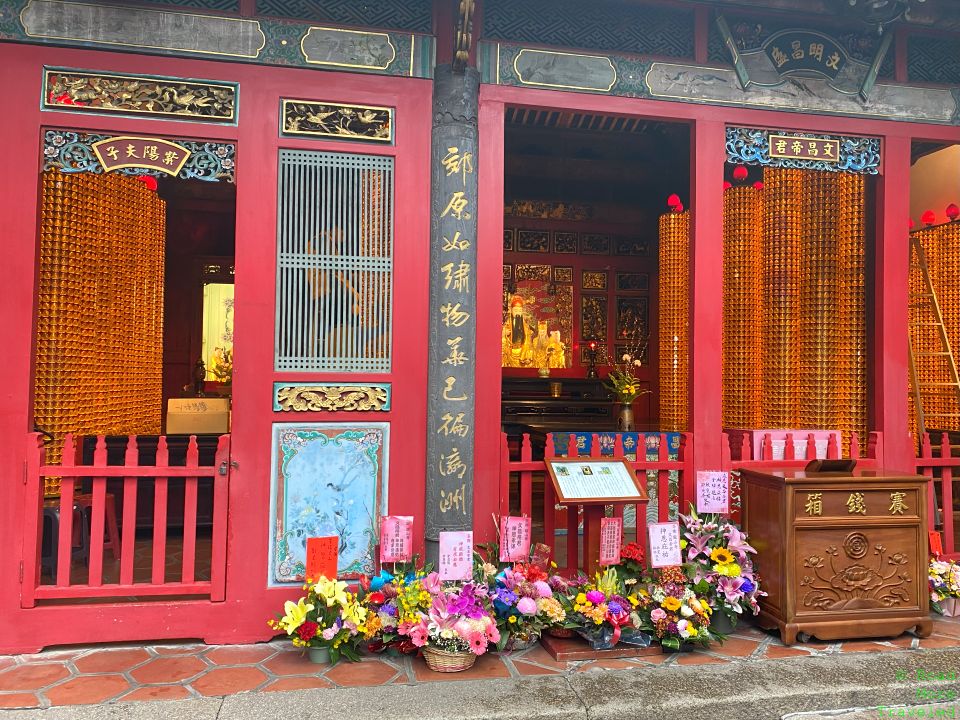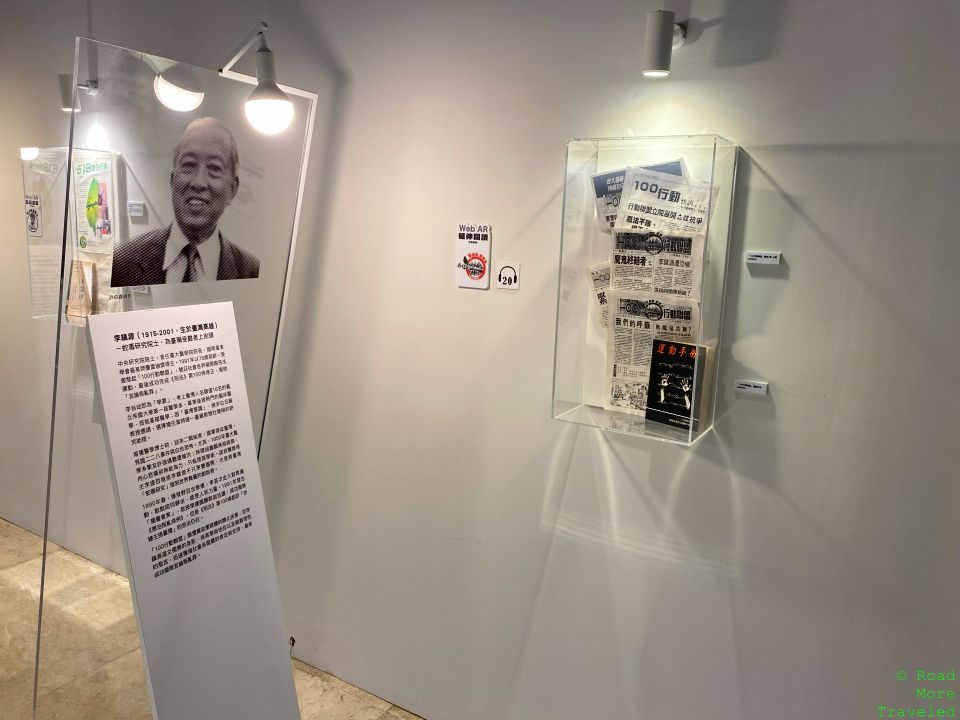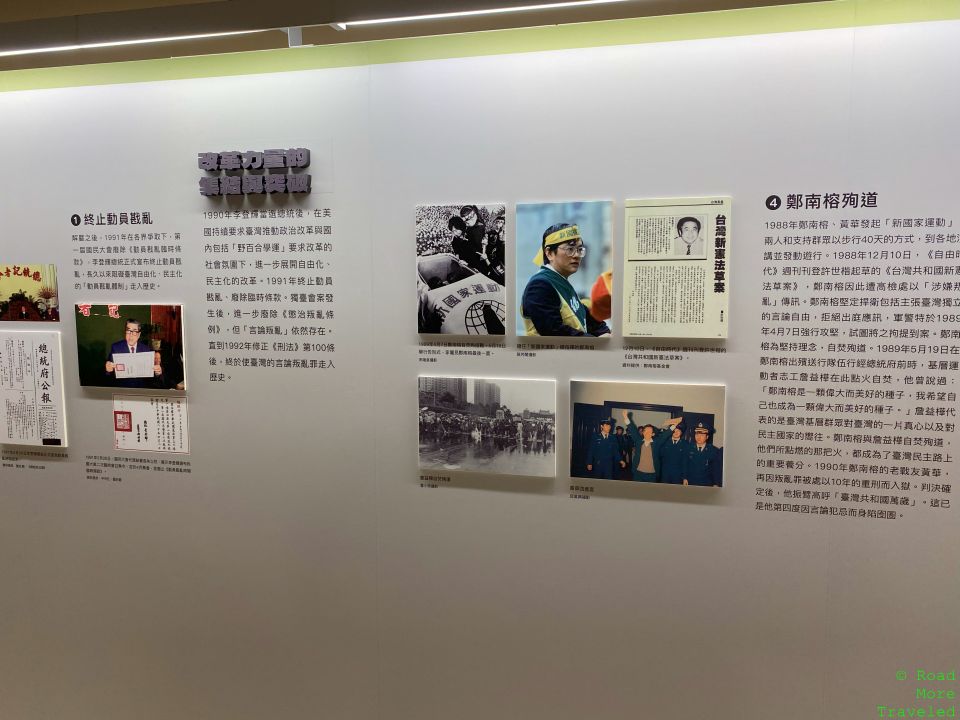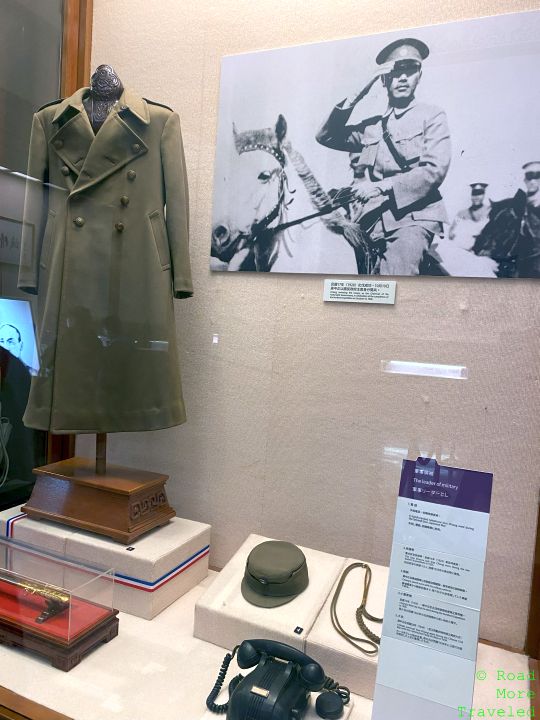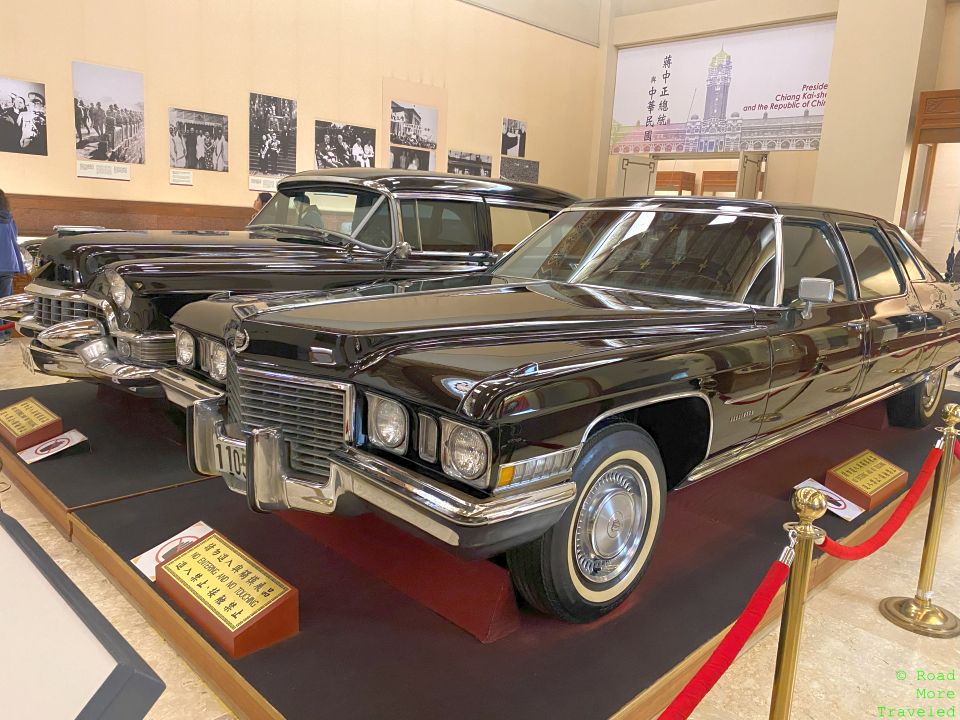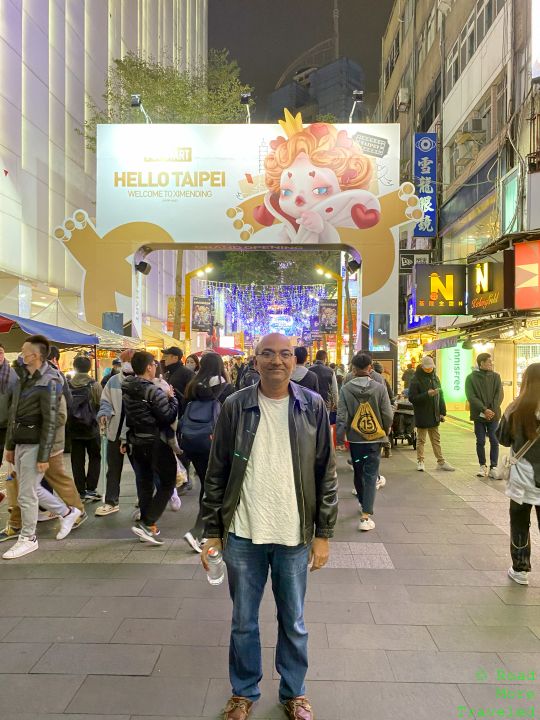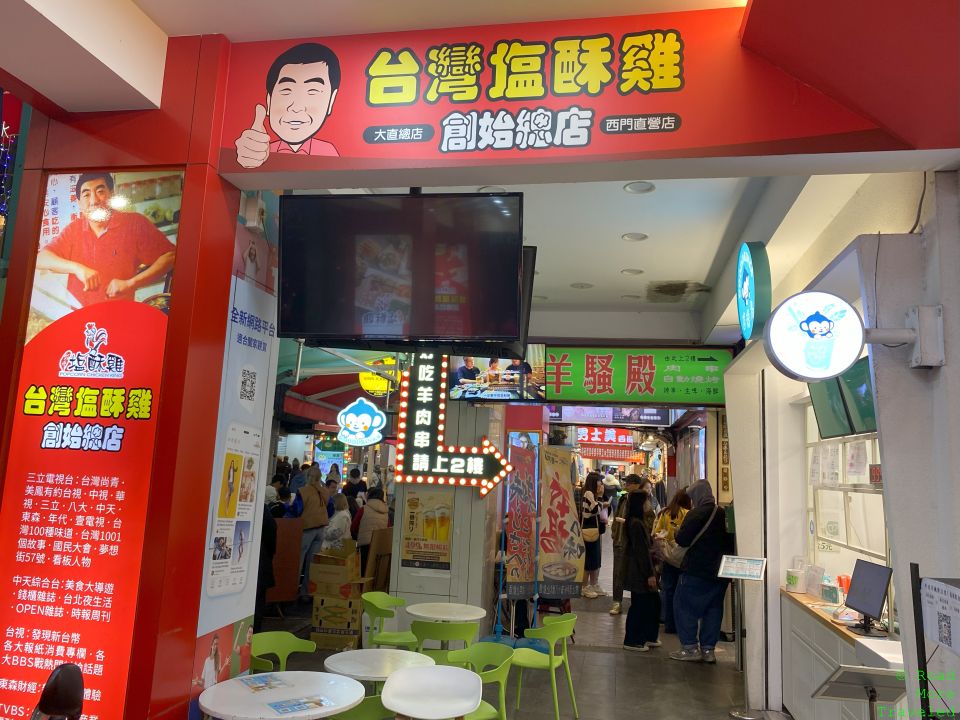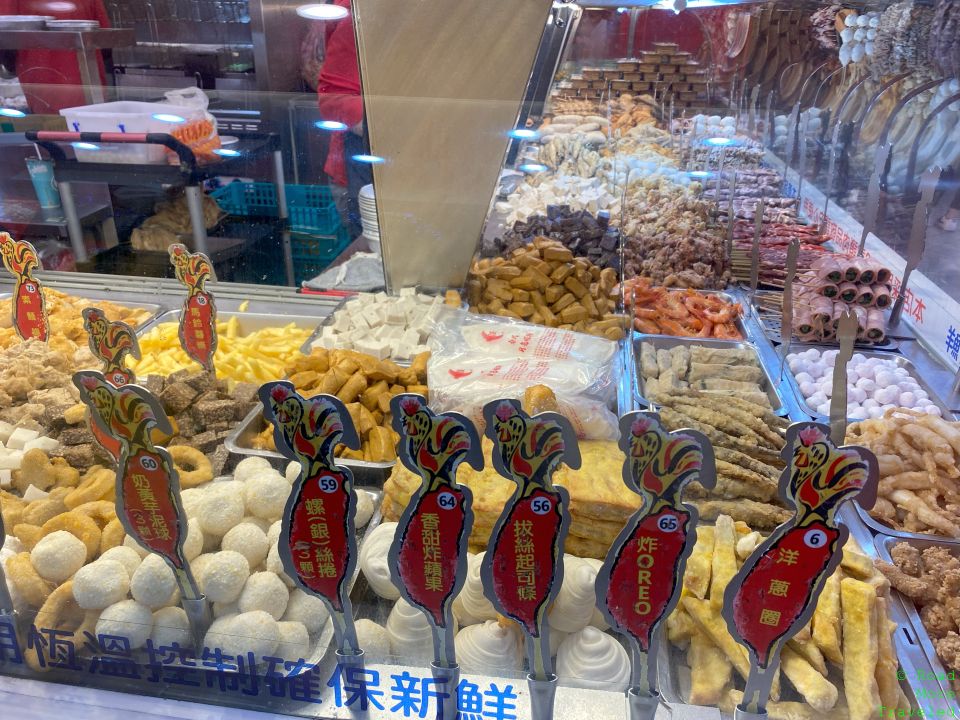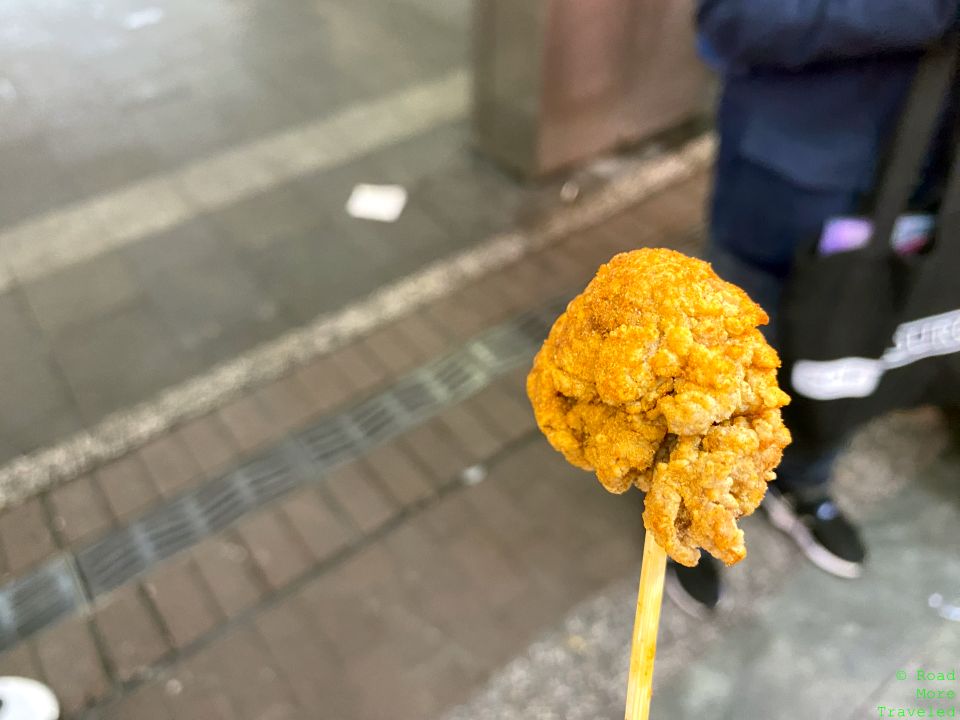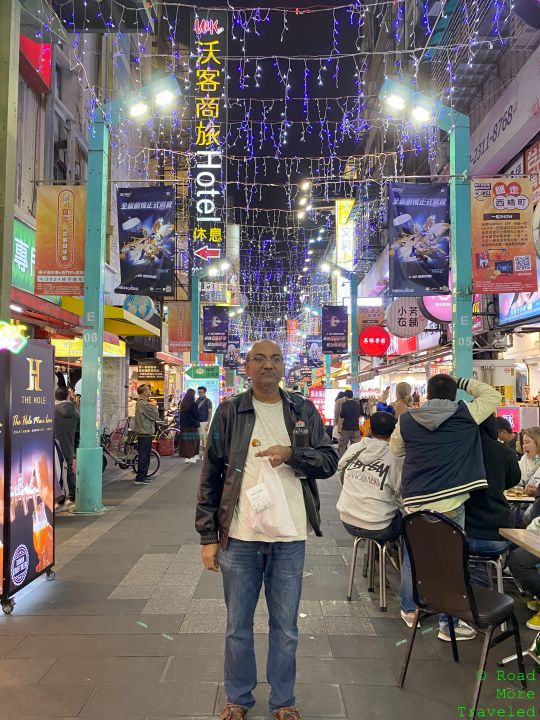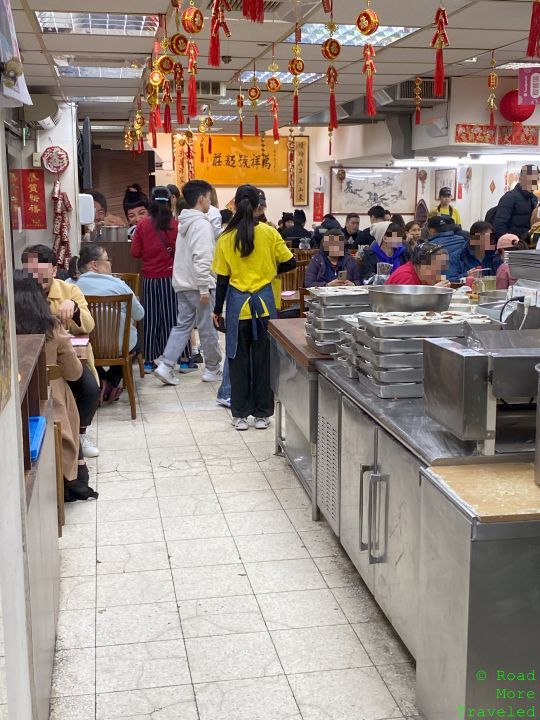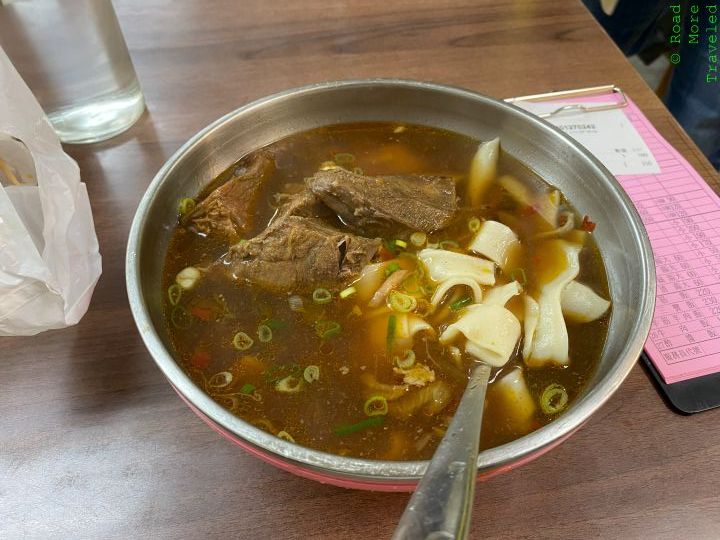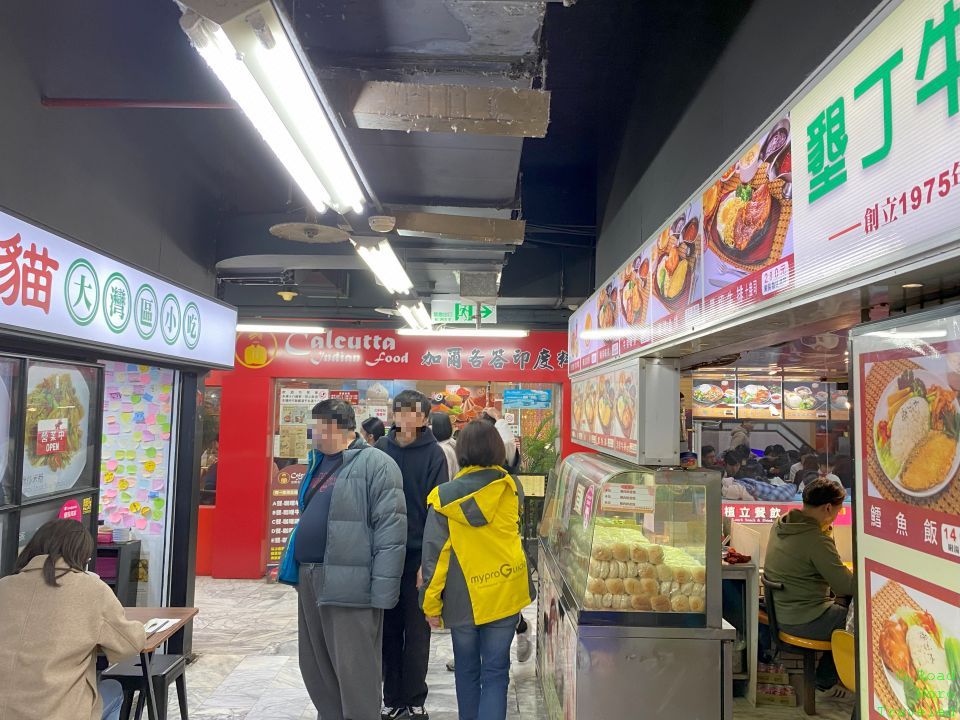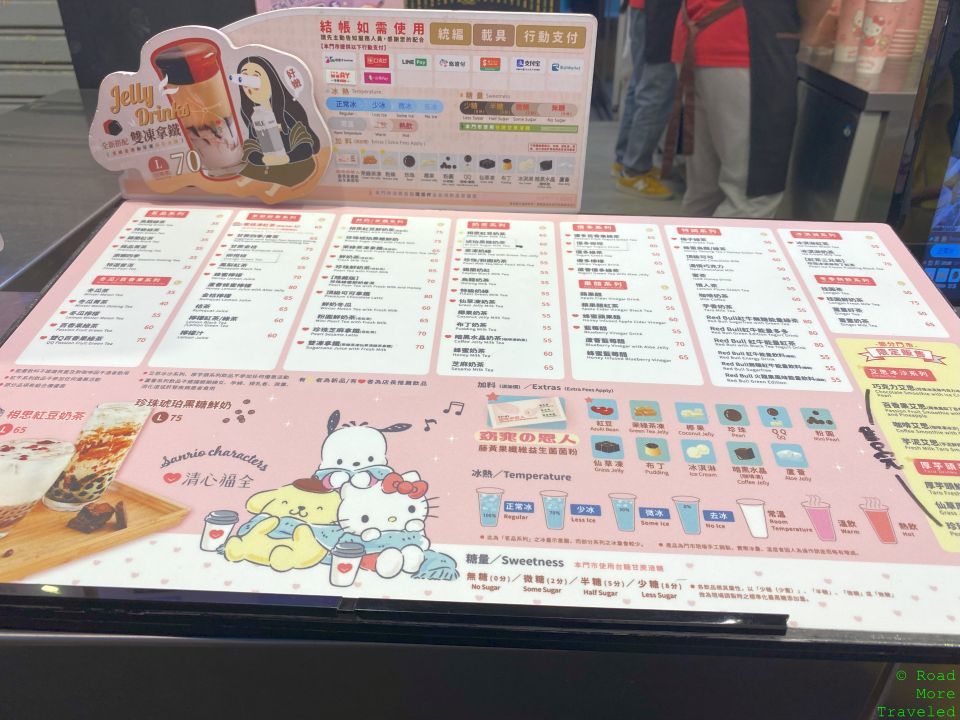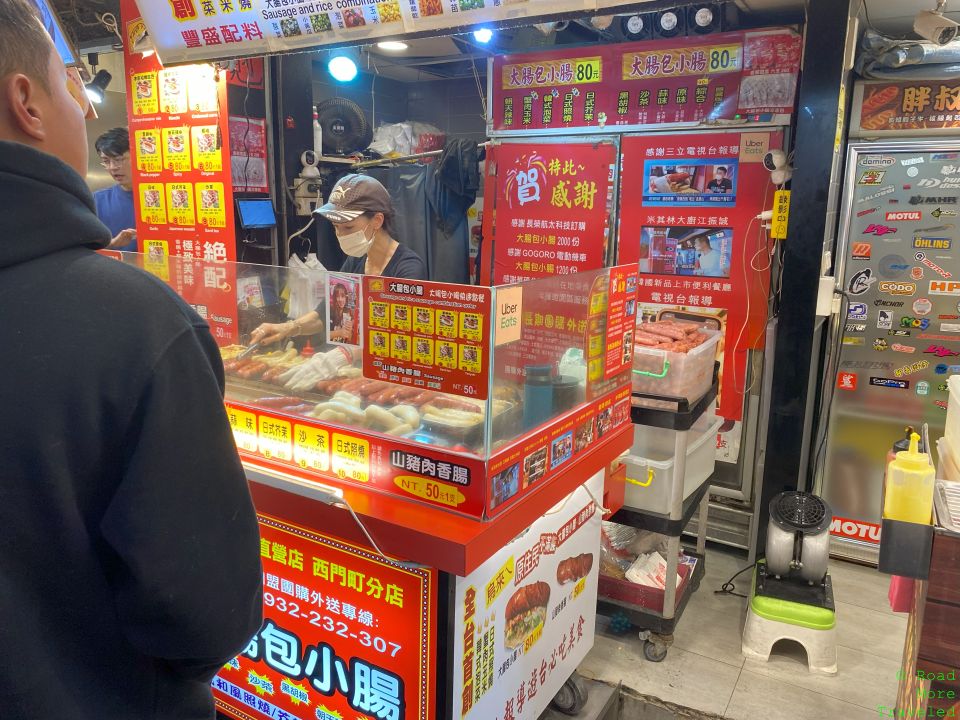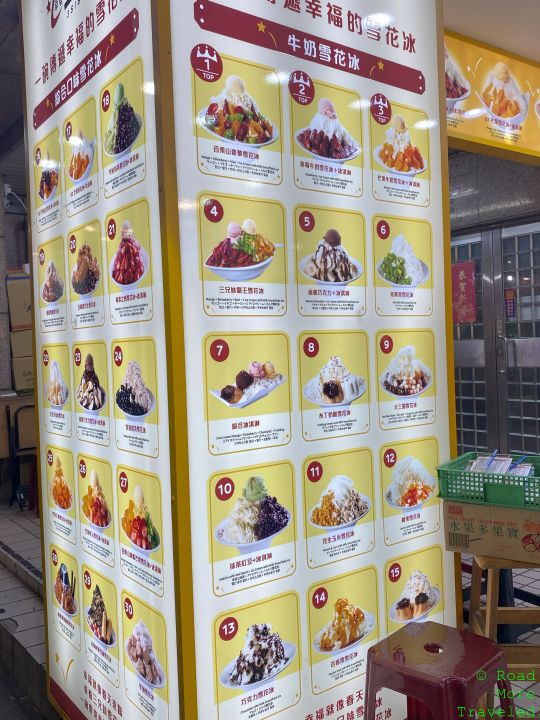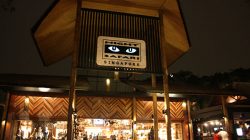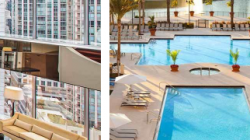I very rarely travel overseas without at least trying to get a taste of where I’m going. This time, Taipei a couple of weeks before Chinese New Year seemed like a great opportunity to explore the city. Even better, a coworker drafted her family to show me around. And so I set out to find big buildings, night markets, and cats in Taipei.
Note: this is part of my trip report series covering my around-the-world trip to Taiwan in January, 2024. Click here for the trip report index and introductory post.
Date of Visit: January 26-28, 2024
Big Buildings, Night Markets, and Cats in Taipei – Night Markets
I arrived in Taipei a little after 6 pm Friday, with my flight out scheduled around noon Sunday. That basically gave me Friday night and Saturday to look around. My hosts met me at the airport, and first took me to my hotel, the Palais de Chine Hotel in the Datong District. After checking in and dropping off my bags, we headed to one of the night markets for dinner.
One important note: while I had the luxury of a local host to drive me around, in general, it’s far easier to get around the city via the MRT (Metro). Click here for a helpful guide from Metro Taipei that provides detailed information on how to travel between set stations, along with fares. I found it pretty easy to use the MRT; just make sure you have coins to buy a single-use token. Throughout this post, I’ve included how to reach the various sites I visited via the MRT.
Night Market Basics
If you come to Taipei, a visit here isn’t complete without a visit to the city’s famous night markets. Though the exact number isn’t fully known, there are 25 plus across Taipei and New Taipei City. As the name suggests, the night markets operate only in the evening in night. Most open around 5 pm, and close after midnight. Peak times are usually 7-9 pm on weekends. Some markets have sit-down restaurants open for lunch, however. Each market typically features a few specialties unique to that market. And most importantly, you can eat a lot of food for not much money, in US dollar equivalent at least. Most items run between 50 and 150 TWD ($1.50 – $4.75 at current exchange rates). And believe it or not, several stalls display the coveted Michelin star (or two, or three).
Note: you’ll want to either carry some cash, or download “LINE Pay” before arriving at the markets. Just link to a credit card that doesn’t charge foreign transaction fees. You might get lucky and find a stall that takes Apple Pay or credit cards, but don’t count on it. As far as language barrier, some more frequented stalls (especially in the Shillin Night Market) offer English menus. But in many cases, be prepared for the old point and nod technique. Thanks to modern technology, you can often pull up a menu via QR code, then point to what you want. A little research WILL save you quite a bit of time here.
One last interesting side note: many food stalls and restaurants in the night markets have earned Michelin bib gourmands. If you take a night market tour, you can ask your guide if they can include one on your tour.
Ningxia Night Market
Anyway, my first visit was to Ningxia Night Market, also in the Datong District. Ningxia ranks as one of Taipei’s better known markets. The market’s famous items included taro egg balls and oyster omelets. This blog post from Taiwan Obsessed provides a good overview of the market. (Taiwan Obsessed provides good info for the night markets in general, along with useful links to the stalls.) If using the MRT (Metro), it’s a short walk from exit 5 of Zhongshan station, Taipei Main MRT station, or exit 1 of Shuanglian station. It’s relatively small at 170 meters long, so it’s a good option for beginners.
Like much of the city, Ningxia was all decked out for Chinese New Year. And at 8 pm on a Friday night, it was REALLY busy. The mass of humanity really makes the night markets what they are.
Though taro balls and oyster omelettes rate as Ningxia, top draws, my hosts picked a different delicacy. This was turkey rice, a variation on Chiayi-style chicken rice. Side dishes included pork dumpling soup, sauteed bamboo shoots, and braised tofu with egg.
This stall has a few sit-down tables. Fortunately we found one to enjoy our meal.
Here you can see the full menu with prices. See, I told you it’s cheap.
And like most stalls, the goodies are on full display for inspection.
Next door to this space is a relative rarity in the night markets, a fully vegan stall. Give this place a look if tofu and noodles are what you’re in the mood for.
Afterwards, my hosts took me through the northern end of the night market. This area is the trinket shopping area if you want some cheap souvenirs.
At the northern end of the market, we turned around, and then headed back through the center of the market. Like I said, it’s a mass of humanity on a Friday night.
My hosts recommended the spicy corn, so we ordered some. You can order these as spicy (or not) as you want. But I asked for one as hot as possible, naturally. A simple yet really delicious snack for less than $3.
As we headed back to the south end of the market, we passed the stall with the famous taro balls. I really should have saved some room, but I couldn’t eat any more. In any event, there was a truly gnarly line extending behind the stall.
There’s also some more exotic options available in the stalls, including squid and octopus.
I really wish I had the appetite I did 20 years ago. There’s lots of stuff I would have liked to try, but I was just too stuffed.
If arriving via the MRT, you can reach Ningxia Night Market by the following:
- Tamsui-Xinyi Line to Minquan West Road or Zhongshan Stations
- Zhonghe-Xinlu Line to Minquan West Road
- Songshan-Xindian Line to Zhongshan
The National Palace Museum
The next day, I tried to stuff in as much as possible with my full day in the city. We set out a little after 9 to our first stop, the National Palace Museum. The name represents something of a misnomer, as the building isn’t an actual palace. Instead, it’s a spin-off of sorts of the Palace Museum of Beijing. Following World War II and the Chinese Civil War, a subset of artifacts were taken from the Palace Museum and five others, and relocated to Taiwan by the Nationalists in 1949. The actual museum building, while impressive, only dates to 1965.
With its location on the north side of Taipei, there’s also a nice view of the mountains towards Yangmingshan National Park.
Heading inside, as with many public buildings, we first came across a Chinese New Year display.
The museum itself is huge, with three floors of exhibition space containing over 600,000 artifacts. Notable items include paintings, ceramics, calligraphy, carvings, metalwork, and rare books. The collections of bronze, ceramics, and jade is particularly impressive. We spent much of our visit taking a look at these exhibitions.
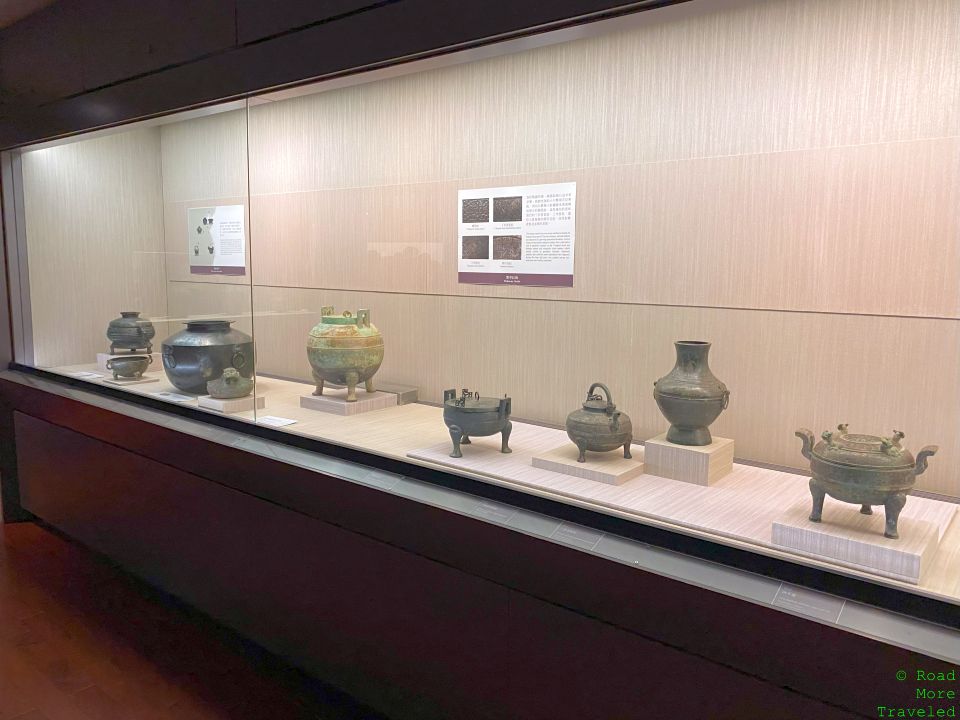
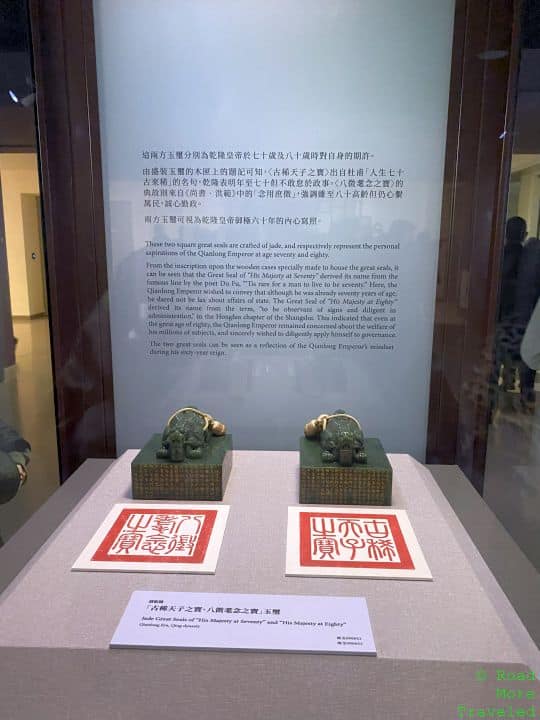

The museum’s two most famous jade pieces, sadly, weren’t on display. The museum loaned the “Jadeite Cabbage” and “Meat-Shaped Stone” to the satellite museum in Taibao.
The museum also featured a special exhibition called “Boundless”, covering the history of maritime trading between China and other nations. I really enjoyed this exhibit, both for the old maps and trading records, and the sample artifacts.
After touring the museum for a bit, we headed to the restaurant on the top floor for lunch. My hosts recommended the beef noodle soup, a Taipei specialty the restaurant is apparently known for. I found it delicious indeed.
If taking public transit, you can reach the National Palace Museum via Shilin Station on the Tamsui-Xinyi Line. However, it’s a bit of a hike, at a little over 2 miles. You’re better off taking a bus from Shilin if you don’t want to take a taxi.
The World’s First Cat Cafe
After lunch, we headed to my most-stop visit on this trip. This crazy cat dude wasn’t about to leave Taipei without a visit to the world’s first cat cafe. Cafe Dogs and Cats 1998, aka Kitten Coffee Garden, opened in 1998 as the first of its kind. The Shilin District landmark is now a magnet for crazy cat people worldwide who find themselves in Taipei.
My two cats hold the establishment in abject contempt because dogs get first billing on the sign. But I digress.
Anyway, the setup looks very familiar if you’ve visited a cat cafe. It’s really a coffee shop with a bunch of resident cats. At each table, in addition to a menu, is a listing of the current non-human residents. In this case, that also includes two dogs and a bird. The 13 cats range in age from 11 months to 19 years.
A little after lunch on a Saturday, we found the place pretty much empty.
The cats, as usual, mostly hid and slept, though a few did come out to inspect the humans. And beg for food, of course. Visitors can pet the cats, but picking them up isn’t allowed.
Meanwhile, a bird in a cat cafe with 13 cats seems like…a really bad idea…
At least the dogs seemed to get along with the cats just fine. (At one time, we had 9 cats that hung out at my family’s house in east Texas. They thoroughly bossed around any dogs that dared to come by.)
Anyway, the cafe features an extensive coffee and tea menu. I ordered a Viennese coffee, and my host a cappuccino. As you’d expect, the mugs are cat themed, and the cappuccino foam features cat art. I found the coffee pretty decent.
Even the restrooms continue the cat theme, in this case showcasing the ghosts of cats past. (Kind of sad to see, actually.)
And yes, the Guinness Book of Records bestowed the cafe with the title of world’s first cat cafe.
Cafe Dogs and Cats is easy to reach via MRT, literally next door to Zhishan Station on the Tamsui-Xinyi Line.
Big Buildings
We spent the rest of the day experiencing big buildings, cats, and night markets exploring big buildings. Our first stop was the Grand Hotel Taipei, at the border of the Shillin and Zhongshan Districts. Generalissimo Chiang Kai-shek commissioned the hotel’s construction in 1949 as accommodations for foreign VIPs. Though initial construction was completed in 1952, the full, current structure opened on October 10, 1973. At 285 feet tall, it’s regarded as one of the tallest Chinese Classical buildings today. It even stood as Taiwan’s tallest building until 1981.
The exterior certainly stands out as one of the city’s most recognizable landmarks.
When driving up, guests pass through the hotel’s main gate. It resembles the gate to a Shinto shrine, a tribute to the Taiwan Grand Shine, which stood at this location during Japanese rule.
The interior, meanwhile, is known throughout Taiwan for its opulent common areas. On the eve of Chinese New Year, it certainly was decorated throughout for the occasion.
Look up at the ceiling, and you’ll see an intricate pattern of drawings.
After our visit to the Grand Hotel, we headed to see the grand daddy of them all, Taipei 101. From its opening on New Year’s Eve 2004, Taipei 101 held the title as world’s tallest building for nearly 6 years. At that time, the Burj Khalifa in Dubai wrested that title. I originally wanted to head up to the observation deck on the top floor. Unfortunately, though, a steady rain and associated low ceilings began after leaving the hotel, shelving that plan. We settled instead for admiring the building from afar.
And of course, the ubiquitous “LOVE” sculpture is out front.
We did head in for a few minutes just to look around. Though we decided to pass on the observation deck due to weather, a large shopping mall operates on the lower levels that you can check out. The giant escalators caught my attention from the beginning.
We also found a very colorful inflatable dragon on the occasion of Chinese New Year.
And also a…really really big ice cream cone made of flowers. I assume this was intended as a Valentine’s Day display.
To reach Taipei 101 via MRT, take the Tamsui-Xinyi Line to Taipei 101/World Trade Center Station.
Longshan Temple
Our next to last big building on our day tour was Longshan Temple. Though the original temple dates to 1738, the current structure was built after World War II. Sadly, like many historic buildings in Taiwan, the Allies bombed the original structure during the war. It’s considered by many as Taipei’s most important temple, and attracts a good number of visitors daily. And for those seeking love, you can ask for help from the Taiwanese version of Cupid, Yue Lao.
The name literally translates to “Dragon Mountain Temple”, thus the numerous dragon sculptures atop the main gate. (The sculptures and mosaics look noticeable discolored at this stage.)
Before heading inside, if you have time, the area around the temple is worth exploring. There are numerous fortune tellers, herb and medicine merchants, and four night markets, including the famous Huaxi.
Anyway, immediately after entering the gate, there’s an artificial waterfall to your right.
From here, make sure to enjoy a few moments in the courtyard to appreciate the distinctive Taiwanese design.
Right in front of you across the courtyard is the Main Hall. This area houses the temple’s primary deity, the golden statue of Guanyin, or Guanyin Buddha. Remarkably, the statue is an original piece. Although WW II bombing destroyed the rest of the main hall, the statue of Guanyin remained intact.
Altars of several other deities are also in the Main Hall, each serving a different purpose. Similar to Hinduism, the deity you pray to depends on what you’re praying for.
You can reach Longshan Temple via its namesake stop on the Bannan Line.
Chiang Kai-shek Memorial
Our last stop during daylight hours was the Chiang Kai-shek Memorial. The historical site commemorates the life of its namesake, the leader of the Chinese Nationalists from 1928 to 1975. The Memorial Hall consists of a few separate sites to visit. First is the sprawling courtyard (Liberty Square), featuring the distinctive blue and white memorial buildings, flanked by the National Concert Hall and National Theater.
Inside the memorial, meanwhile, is a giant statue of Chiang Kai-shek up at the top.
Until recently, a changing of the guards ceremony occurred here hourly. In June, the location changed to the courtyard (Democracy Boulevard) outside. More on the reason why later. In the meantime, I’ve uploaded a video of the ceremony to my YouTube page that you can watch.
On the bottom floor, meanwhile, is a museum dedicated to Chiang’s life and career. So is Chiang Kai-shek a hero or a villain? The museum does, I think, provide a balanced view of both sides of the question. Supporters point to his efforts furthering economic and social modernization in both mainland China and Taiwan, his push to keep Communist power in check, and his leading role in Chinese resistance against Japan. Detractors, though, view him as a despot, one who brutally purged his political enemies (the Communists) in both China and Taiwan through “White Terror” campaigns. For what it’s worth, the current Taiwanese government takes a dim view of the former leader. The changing of the guard ceremony moved outdoors because officials believed the prior ceremony was “worshipping authoritarianism”.
Anyway, if you visit, check out the exhibits, and decide for yourself.
An interesting footnote – Chiang had a thing for Cadillacs. His motorcade included many over the years.
To reach the memorial via MRT, you can take either the Songshan-Xindian Line or Tamsui-Xinyi Line to the namesake Chiang Kai-shek Memorial Hall Station.
More Food – Ximending Night Market
Naturally, I couldn’t resist one more visit to a night market to compare and contrast two of them. For this night market visit, I booked a guided tour of Ximending Night Market. Ximending isn’t a night market in the traditional sense. Rather, it’s a collection of food stalls and restaurants embedded within the much larger pedestrian shopping area. Anyway, I booked the “Street Food Walking Tour” through Klook. Though geared towards Filipino visitors, anyone can book, and they offer English-speaking guides. I paid just $26 for the tour, expecting a small group experience. However, nobody else showed, so I ended up getting a fully private tour.
One important thing to remember about many night market tours – you usually have to pay for your own food, except for perhaps one snack or drink. Bring cash, or set up LINE Pay before arriving. My guide had a rough agenda and food items to try sketched out, but with only me to show around, we ended up customizing things quite a bit.
The tour begins at Exit 6 of Ximen MRT Station (Bannan and Shongshan-Xindian Lines). My guide arrived promptly at 7, and we headed into the organized chaos of a night market on Saturday night.
Our first stop wasn’t quite what I expected – a visit to a fried chicken joint. Apparently, though, Popcorn Chicken King is sort of famous in these parts.
There’s actually much more on the menu besides popcorn chicken. You can choose from a wide variety of meat and seafood, a few veggies, and even desserts.
My guide suggested keeping it simple, so I selected the spicy popcorn chicken. I found it a tasty snack, though when they say spicy, they mean it. While I enjoyed it, I also like my food around 7-8 out of 10 on the heat scale.
While I munched on my popcorn chicken, we walked down the busy streets of the Ximending pedestrian area. On a Saturday evening, it’s quite lively with both shoppers and those looking for a meal.
We walked over to the Shinjuki Plaza shopping mall, home to a large food court on the lower level. The destination? Lao Shan Dong Homemade Noodles in the corner. Beef noodle soup is the draw here, earning the shop a Michelin bib gourmand.
This place had a bit of a crowd, with a line to get in. Fortunately, it moved quickly, and we only waited about 15 minutes.
The beef noodle soup was phenomenally delicious. Like seriously, some of the best beef broth I’ve had. To me, the wide noodles also somewhat resembled the houtou noodles I tried in Japan years back. The problem? It’s also quite filling (and quite a meal for just NT$130, about $4). So if you hit this place up first, don’t expect much room left to try anything else.
As we left the mall, I noticed an Indian restaurant at the end of the hall, I assume of the Bengali persuasion based on the name. (One that gets decent reviews, if you’re in the mood for Indian food.)
From here, my guide planned to take me for braised pork rice, a Taipei specialty. However, I felt completely stuffed, so I asked to take a walk around the market first. Approaching 8 pm, the crowds really began to pick up. The unmistakable energy – and frankly, sensory overload – of big Asian cities never ceases to amaze me. It’s not a feeling I honestly enjoy, but it’s unique.
After walking around for about 20 minutes, I still felt pretty well stuffed. But my tour included a drink or dessert, so I asked my guide for a bubble tea. As a general rule, I don’t drink cold tea. Call me a relic, but I only take tea or coffee hot. However, on my flight over, I watched a show covering well-known foods of Taipei. Taiwanese bubble tea was on that list. And so I felt compelled to at least give it a try.
My guide took us to Ching Shin Fu-Chuan Tea Station, one of the oldest chains in Taiwan. The shop features Hello Kitty-themed menus, so it already earned my seal of approval. Note that the menu also helpfully includes English translations.
Once again, I kept it simple with a standard boba milk tea. The setup is fairly simple: iced tea with milk, brown sugar, and tapioca pearls. So how was it? Like drinking dessert through a straw. It’s actually quite delicious, but it’s a LOT of drink, and quite sweet. The opaque to-go cup completely hid the drink, so I couldn’t get a photo. But the glass of tea at the bottom left of the above photo gives you an idea of what it looks like.
Needless to say, after downing most of the tea, more food was out of the question. With my (lack of)) appetite completely failing me, we at least walked around to check out some other well-known eats in Ximending. Close to the tea stall is another stall selling Taiwanese sausages.
There’s also the famous “flame-grilled beef”. This is a snack unique to Taipei. It starts with beef cubes cooked on a grill, then nuked with a blow torch. They say the result is nicely charred meat that’s melt-in-your-mouth soft when eaten.
Another stall a couple of blocks down featured every cut of poultry you can possibly imagine.
One Taipei specialty I really regret passing on was the mango shaved ice. Then again, sometimes you just have to know your limits.
We took one last walk through the shopping area of Ximending. After enjoying my tea, we did make one stop to buy some loose tea to take home. Given that Taiwan is a tea producer, I was surprised at the lack of black tea to buy. Most of what’s available is green tea. But I did eventually find a couple of boxes.
Final Thoughts
This was a lot of squeeze into effectively one day. One of my patented crazy day trips from Dallas to Taipei was…crazy indeed. But I enjoyed my time here and look forward to spending more time on a future trip.


